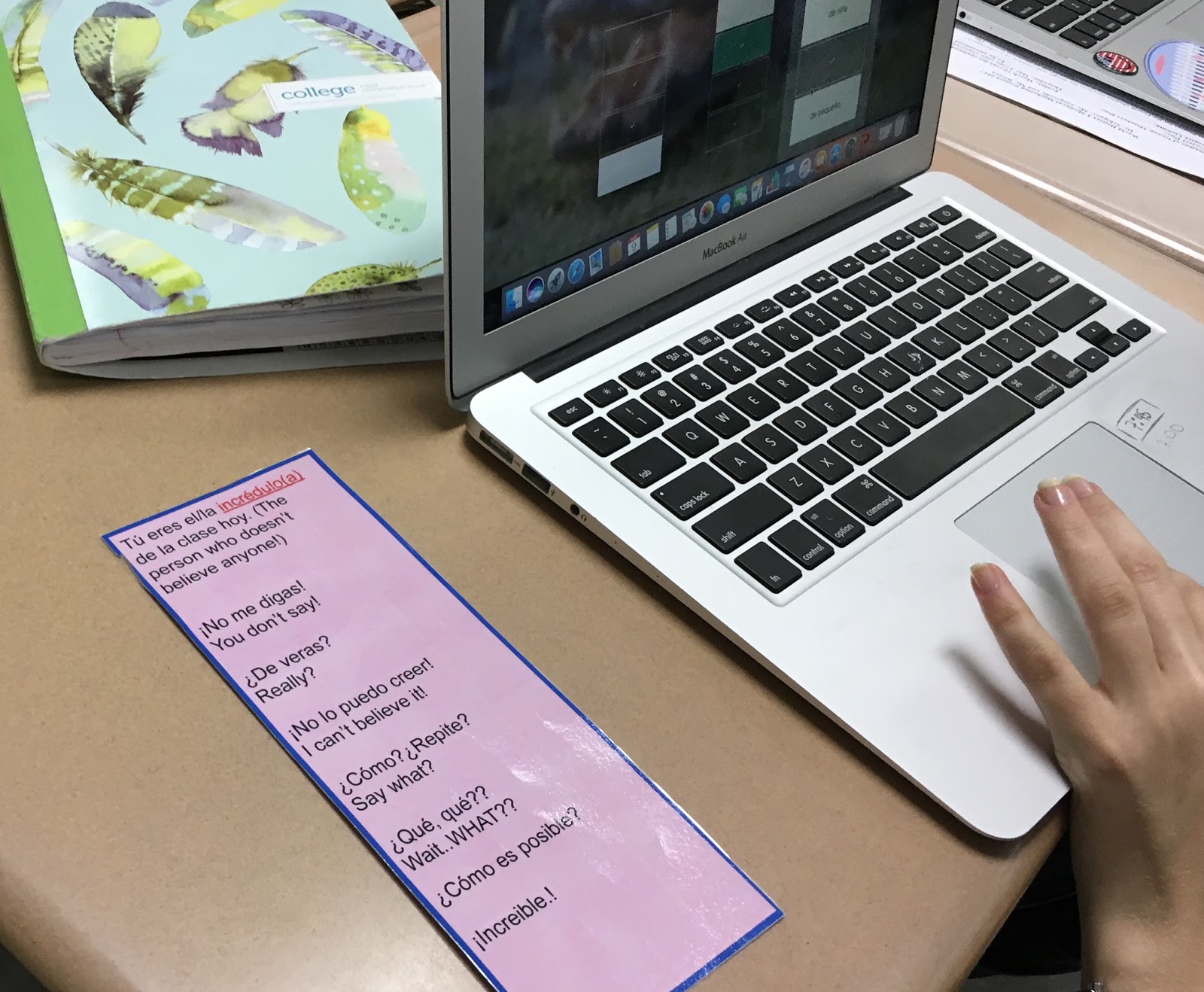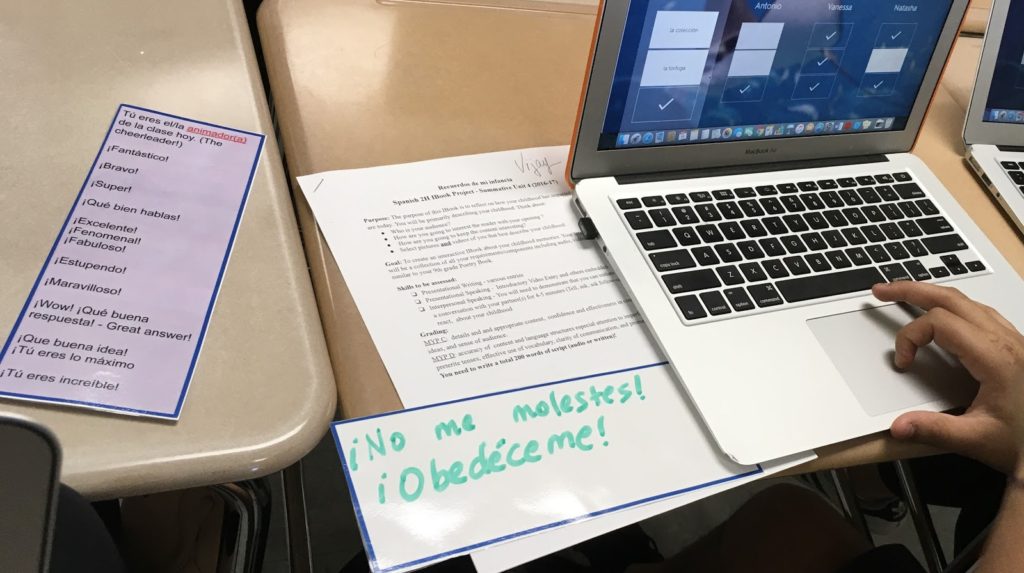Elena Giudice considers herself fortunate to have lived and worked in international schools in France, Puerto Rico, USA, The Bahamas, and Malta. Her studies in Intercultural Communications influenced her personal and professional growth in such positive ways that she strives to reach her students not only in their language growth but in the development of their social-emotional and cultural intelligence skills. Elena is currently Chair of the World Languages and Cultures Department at Saint Andrew’s School.
I always look to lower school for inspiration. I firmly believe that many lower school learning experiences model best teaching practices that can be adapted easily to the WL classroom at any level. Sometimes, we don’t even realize we are modeling lower school experiences. For example, the lower school circle time is the moment in upper school when we begin class as a group, warm up, hook the students, share current events, and then move on to more differentiated or pair work, or small group activities. We may not be sitting on a carpet in a circle but we are starting class as a community – together.
I have always loved the concept of student roles in the lower school. I was always amazed as a Spanish lower school teacher that went from classroom to classroom how home room teachers created a variety of roles to make everyone feel relevant, and how children loved taking their roles seriously in their learning community. I always admired my own children’s Montessori classrooms where students have always had a big role in sustaining their environment. The plant waterer, the guinea pig or fish tank caretakers, and the snack bearer were certainly prestigious roles.
A while back, I led a department meeting that focused on sharing successful techniques and approaches that would help shift our classrooms towards a more student-centered class. In other words, less “teacher talking” and an increase of target language use amongst the students. Two of our upper school colleagues shared their experiences leading Socratic Seminars including using a student chart to track student participation. This chart holds students accountable in a group discussion for a) offering new ideas, b) asking questions to deepen the discussion, c) supporting a comment referenced by the text, and d) building on someone else’s idea. My first thought was: “great for upper levels, but too sophisticated for my novice level courses”, which I was teaching at that time. I noticed the different roles listed on the chart. That, combined with my memories of student roles in the lower school, got me thinking about how to create and assign some roles to novice level students that would help them help me talk less in class. I came up with personality roles. Based on the roles, students would be “responsible” for commenting at relevant times certain expressions with the main purpose of maintaining the use of the target language. I created personality role cards with useful expressions that a person with a particular personality might say. These were my initial roles:
[lists style=”style6″ line=”0″]
- The Curious – the student who constantly asks questions
- The Cheerleader – the student who animates and encourages
- The Pessimist – the person who complains all the time
- The Optimist – the “everything is good” student
- The Incredulous – the student who doesn’t believe anyone
- The Philosopher – the deep thinker who challenges others to elaborate expression.
- The Boss – the student who tells everyone what to do
- The Romantic – the sweet, loving student
- The Slang Guru – the slang master (can be updated regularly)
- The Flirt – the student who compliments everyone[/lists]
My goal was to slowly introduce and test this idea out rather than overwhelm the class by assigning roles to everyone. It was early in the first semester and most students were still feeling uncomfortable speaking out. I was getting impatient with the lack of oral participation. I decided to call out three students, the most vocal or advanced in my class and bring them into a mini-conspiracy. I explained the idea of the role cards and stressed that it was not about calling out the expressions randomly, rather finding the right time to go with the flow of class discussions. The students seemed to understand and were eager to go along.
During that class, I actually heard them call out a few expressions at the right time, but no one noticed as they did not pronounce them well, they didn’t use correct tone, and they lacked confidence in general. At the end of the class, somewhat disappointed, I thanked my students for their support and collected the cards and put them to the side wondering if I had wasted my time by creating these cards! Obviously, they were not ready and I should have thought of that. After all, these Spanish I students were only 6 weeks into their semester and still at a novice-low level.
I set the cards to a side and forgot them for while, still hoping to use them again, but thinking about when and how best to re-implement them. I recently pulled them out and passed them out to my Spanish IIH students, a class that shifts from novice-high to intermediate-low, and a very lively class. I decided not to create a conspiracy this time. I simply arrived and told my students that in the next twenty minutes of class discussion they had a specific role to play and handed the cards out. No explanations needed. The conversation prompt was shared and an explosion of comments followed: Seriously? I hate that! Why? How sweet! Are you nuts? How romantic! They actually kept to the task and did a super job. They found it quite funny, too! They knew when to interject with the appropriate comments, they were not too distracted by the cards and they used the expressions when relevant. Most exciting, the flow made sense and it sounded really natural!
Looking back and reflecting between my first “flop” to the surprisingly positive experience (my cards were not a waste of time!), I adjusted the cards for the novice-low to mid levels. The cards were too ambitious and overwhelming, and the timing was not appropriate for the novice level. There was also the lack of group development and collegial comfort found too early in the year. Students need to feel secure and as uninhibited as possible and for that, you need some time for the group to get to know each other well. I simplified the role cards for the novice-low to intermediate groups by splitting the expressions in half or less and dividing the expressions by level of difficulty, from the very basic novice-low (A) to a more advanced novice-mid/high (B) or the full set (C), the original set, for novice-high to intermediate-low. After intermediate-low I use the actual Socratic Seminar form.
When class begins, my students are now calling out to be the “pessimist”, a fun and popular role and we keep a few blank cards to add new unit expressions.
I hope you found this useful, try it in your classroom, and are inspired to create roles that best fit to the personalities of your students. Please leave a comment and share your experience. The best collaboration is when someone starts an idea and it evolves into something even better!
—————–


Elena, these cards look awesome! Do you have the file available anywhere, like, say TPT? I would totally pay!
Hi Laura! I am so glad you like this! I think you can actually download them from the blog and feel free to use them! I have thought about putting them on TPT. I have never done that. I may just do that!
Hope to meet you someday at a conference!
Elena
Oh man, I totally missed the links on my re-skim! My kids had fun talking about these roles today!
This is such a great idea that allows students to form a personality and feel comfortable expressing themselves in the target language. This is definitely a strategy I will consider implementing.